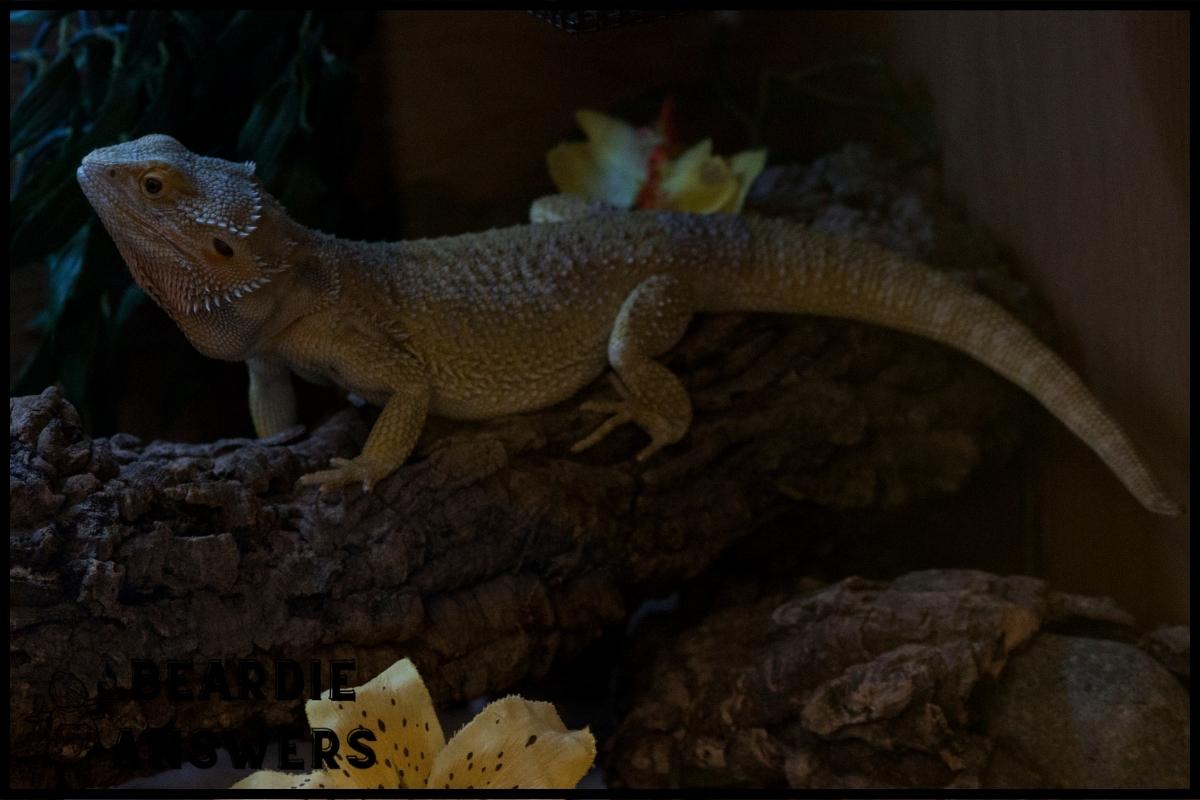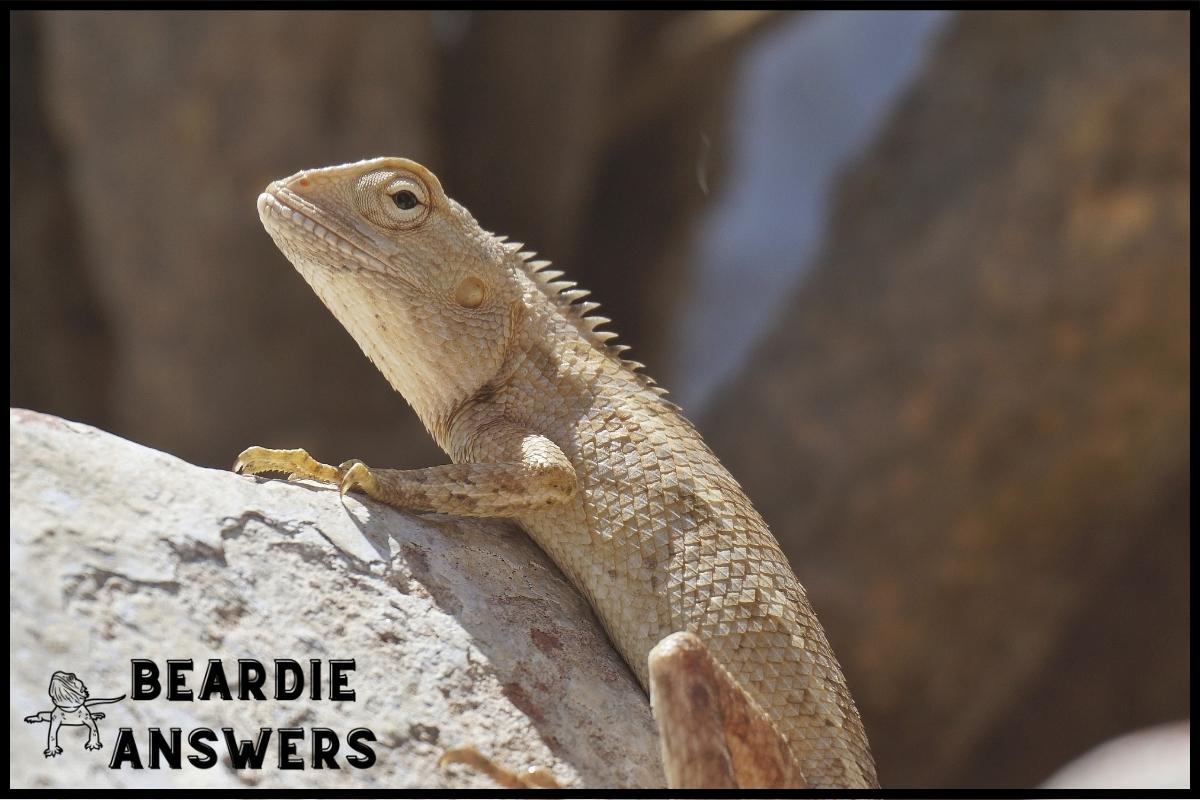A juvenile bearded dragon is typically between 4-12 months old. During this period, they experience rapid growth and require proper nutrition and care to ensure they develop correctly. The optimal conditions for a juvenile bearded dragon include a suitable enclosure, a balanced diet, and appropriate lighting and heating to support their growth and development.Although sand may seem like a natural substrate for bearded dragons, it is not recommended as it can cause impaction if ingested. Other substrates such as reptile carpet, paper towels, or ceramic tiles are safer and easier to clean.
What You'll Learn
Determining Age
Gaining an understanding of the life cycle of a juvenile bearded dragon is like being handed a key to unlock the mysteries of their world. With the right information, you can ensure your pet is happy and healthy from the start.
Determining age is one important factor in providing proper housing requirements and enclosure size for these unique lizards. Juvenile bearded dragons are typically between 4-12 months old. They grow quickly during this time, so it’s essential to provide them with an appropriate habitat that will keep up with their growth spurts and changing needs.
A 20 gallon tank should be sufficient for a single juvenile beardie; however, larger tanks may be necessary as they reach adulthood at about 12 months old. Proper substrate such as reptile bark or sand should also be provided along with plenty of climbing surfaces and other décor items to create interesting hiding spots within the enclosure.
The temperature in the cage must also be carefully monitored since too much heat can cause dehydration while insufficient warmth can affect digestion and metabolism rates negatively. Daytime temperatures should hover around 95°F (35°C) while nighttime temps drop slightly below 80°F (27°C) — both ranges should have hot spots closer to 110–115 °F (43–46 °C). These conditions help encourage appetite and activity levels among young dragons who still require plenty of sleep throughout the day due to their rapid growth rate.
With all these factors in mind, it’s easy to see why ensuring proper care for a juvenile bearded dragon requires some forethought and preparation before bringing them home!
Health And Diet Needs
Now that we have determined the age of a juvenile bearded dragon, it’s important to understand their health and dietary needs in order to keep them happy and healthy.
Bearded dragons are omnivores – meaning they need both animal proteins as well as plant-based diets. A good diet consists of insects such as crickets, roaches, mealworms, wax worms, fruits and vegetables like dandelion greens or squash. It is also important to provide variety by mixing up what you feed your dragon on a regular basis.
In addition to proper nutrition, environmental needs must be taken into consideration when caring for a juvenile bearded dragon. They require temperatures between 80-100 degrees Fahrenheit during the day and no cooler than 65 at night. Humidity should remain around 40-50% with plenty of places for your beardie to hide away from bright lights or other distractions throughout its habitat.
The combination of providing proper nutrition along with an ideal environment will ensure your lizard grows properly and remains healthy over time. As they grow and develop, there may be slight changes in their diet requirements so it’s best to stay informed about these potential adjustments.
With this knowledge in hand, it’s time to move on to discuss growth and development in more detail.
Growth And Development
Time seems to fly by when it comes to the growth and development of juvenile bearded dragons. In the blink of an eye, they can go from a small hatchling to almost full-grown in less than a year! As with any animal, there are certain care requirements that must be met for them to reach their maximum potential.
One important factor for optimal growth is providing an adequate enclosure size for your dragon. This should include plenty of space for climbing and basking as well as hiding places throughout the habitat. A good rule of thumb would be no smaller than 40 gallons per adult bearded dragon.
Additionally, shedding frequency will increase as they grow older so you’ll need to provide more access points and materials like branches or rocks that help facilitate this process.
Bearded dragons also require specific temperatures at different times throughout the day to ensure healthy growth and maturation. Knowing how and when to adjust these settings could make all the difference between mediocre health and excellent condition.
With proper research, dedication, and understanding of basic husbandry practices, owners can confidently raise their pet while helping them reach their fullest potential.
Onward we go now into sex identification…
Sex Identification
Let’s discuss visual identification and behavioral identification when it comes to sexing a juvenile bearded dragon.
Both of these techniques can help us determine the sex of the dragon.
Visual Identification
When it comes to sex identification for juvenile bearded dragons, visual inspection is one of the key methods used.
To accurately determine if a bearded dragon is male or female, look out for certain physical traits such as size and shape variations which can vary depending on their breeding tips, tank setup and overall health.
Males typically have larger heads than females while they also tend to be more muscular with thicker tails compared to females.
In addition, males possess hemipenal bulges near the base of their tails that are not present in females.
Finally, when held up against ultraviolet light you may observe colour changes such as orange patches along their sides which indicate that it’s likely female.
Behavioral Identification
Behavioral identification is another method used to determine the sex of juvenile bearded dragons.
While size and shape variations are useful for visual inspection, observing their behaviors can also be helpful in determining their gender.
Males tend to become more territorial during breeding season and will often display aggressive behavior towards other males when kept in the same enclosure with limited space or inadequate setup.
Meanwhile, females may form groups while basking if they have enough space and a suitable enclosure setup which includes plenty of hiding spots and different levels of temperature gradients.
In general, it’s important to keep an eye out on how your dragon behaves as this could provide valuable clues as to its gender.
Common Behavior
Bearded dragons are social animals, and it is important for them to be in an environment with other bearded dragons. They need to have plenty of basking spots that provide warmth and hiding places so they can feel secure. Additionally, they should also be provided with plenty of space as juvenile bearded dragons typically grow rapidly before reaching their adult size.
It’s important to remember that when owning a juvenile bearded dragon, you must set boundaries on how often it will interact with humans or other creatures. Juvenile bearded dragons may become overly aggressive if left unchecked. It’s best to keep interactions limited unless the reptile has been properly trained by its owner or handler.
Juvenile bearded dragons thrive in environments where they get plenty of attention from their owners; however, it is equally important to ensure that they receive adequate rest throughout the day. A good routine includes providing ample light during the day and allowing them time to relax after hours without any disturbances from outside sources.
With proper care, a juvenile bearded dragon can live a long and healthy life – something all responsible pet owners strive for!
Caring For A Juvenile Bearded Dragon
Bearded dragons, or Pogona Vitticeps, are a popular pet among reptile keepers. This species is relatively easy to care for and maintain in captivity as long as appropriate breeding requirements and enclosure setup are met. Juveniles can be especially fun; they’re full of energy and personality!
Caring for a juvenile bearded dragon includes providing them with the right environment and diet. They require an enclosure that has adequate space for climbing, hiding spots, UVB lighting, temperatures between 80-90 degrees Fahrenheit (27-32 Celsius), and humidity levels between 30-50%.
A variety of live insects should also be provided along with occasional vegetables like collard greens or squash.
To ensure your juvenile beardie stays healthy, it’s important to take regular trips to the vet for checkups so any potential health issues can be identified early on. Additionally, proper hygiene habits such as regularly cleaning their cage will help keep them happy and safe from disease.
Taking these measures will help you provide the best possible care to your beloved scaly friend!
Conclusion
The juvenile bearded dragon is a fascinating creature to care for and observe. They are incredibly important to understand as they can live up to 10 years in the right environment!
Knowing their age, health needs, diet requirements and behavior will help you provide the best care possible. Caring for them properly means keeping an eye on their growth and development, sex identification and common behaviors too.
With patience and plenty of love, your little one will grow into a content adult with time – just like that old adage: slow and steady wins the race!

Hi! My name is Bryan, I am the “one behind the words” here are BeardieAnswers.com. I believe that providing quality care and nutrition is the best way to ensure the health of your pet. Every beardie is special and deserves the best care and attention. If you have questions about your bearded dragon, please don’t hesitate to ask! View My Full Author Page




